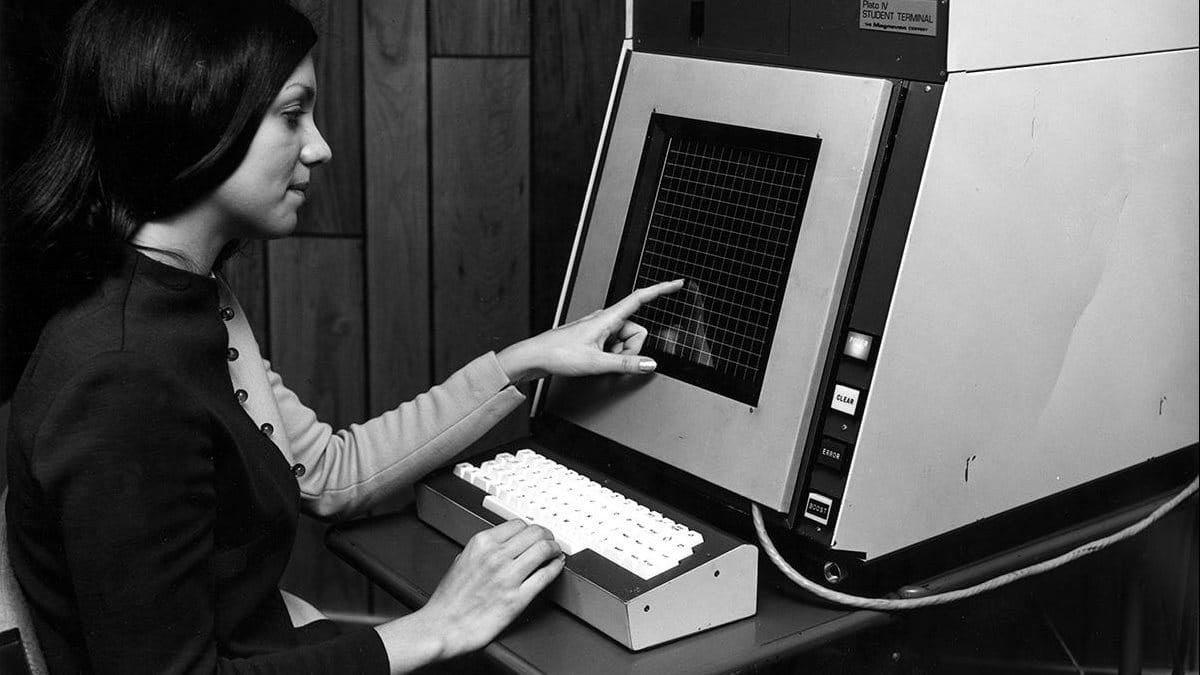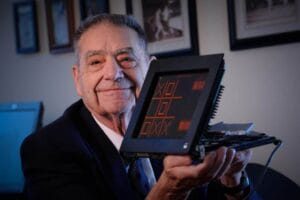Growing up in Illinois, Bitzer earned three college degrees in electrical engineering, all from the University of Illinois Urbana-Champaign: a B.S. in 1955, an M.S. in 1956, and a Ph.D in 1960. He stayed at the university to teach. The school had set up a committee to discuss how to use computers in teaching. Their conclusion: it couldn’t be done. Coordinated Science Lab director Daniel Alpert, who was reviewing the response before sending it on to the Dean of the College of Engineering Will Everitt, asked Bitzer if he agreed with the conclusion. Bitzer replied, “I will have a proposal to you by next week.” The proposal: PLATO, which would run on the school’s ILLIAC I computer, the first computer built by an American educational institution, which was pre-transistor: it ran on 2,800 vacuum tubes. (PLATO was later “bacronymed” to mean Programmed Logic for Automated Teaching Operations.) It became the first computerized teaching platform, eventually offering hundreds of hours of college-level lessons.

PLATO rapidly evolved. By 1961, PLATO II could support two users at the same time, one of the first implementations of computer time-sharing. The ILLIAC was quickly shown to be insufficient, and Control Data Corp. donated a CDC 1604 to keep it going. With that, PLATO III could handle 20 students at a time. To help support his ideas, Bitzer had to invent a few things, including, in 1964, a plasma graphical display (with Professor H. Gene Slottow and graduate student Robert Willson). By 1967, the National Science Foundation took notice and provided funding to keep it going. Alpert used part of that funding to create the Computer-based Education Research Laboratory.

The project hit its stride in 1972 with PLATO IV, and Bitzer declared the project was a success. CDC kept providing additional computers to support more users. The graphic touchscreen terminals proliferated around campus, and in some cases even off campus. It even had a voice synthesizer. Scientists from Xerox’s Palo Alto Research Center came for a tour; famously, it used its resources to create stand-alone computer workstations with GUI interfaces, and invented the mouse to aid user input (and then showed all of that to Apple Computer). “All of the features you see kids using now, like discussion boards or forums and blogs started with PLATO,” Bitzer said in 2014. “All of the social networking we take for granted actually started as an educational tool.”

In 1974, Dr. Bitzer was elected as a member of the National Academy of Engineering for “his leadership in the utilization and development of technology for improving the effectiveness of education.” In 2001 Bitzer, Slottow, and Willson won an Emmy Award for Technology and Engineering for bringing higher quality pictures to television with the plasma display. Bitzer moved to the computer science faculty at North Carolina State University in 1989, and never really retired, continuing to research things that interested him. But he wasn’t upset when plasma displays were replaced by LED screens. “That’s why I’m trying to teach my students to think,” he said in 2015. “If they can think, they can have new ideas that can be creative.” Dr. Donald Lester Bitzer died December 10 at his home in Cary, N.C., from congestive heart failure. He was 90.
